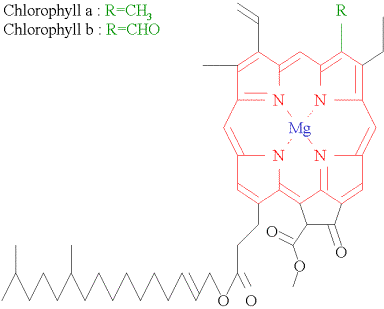
PHOTOSYNTHESIS MUSICAL
CHAIRS ?'s
Use a pencil and paper to answer ?'s then check your answers
at the end
(We did this in class)
| 1. Which of the wavelengths of light does chlorophyll best absorb? |  |
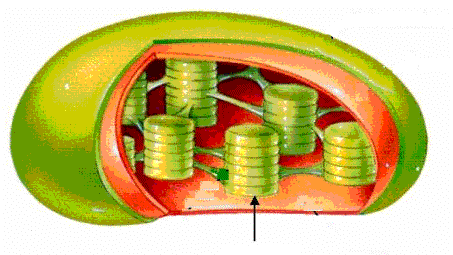
|
2. These individual membrane sacs are called _______________. |

|
3. Name the scientist who discovered that burning a candle used up "something” that a green plant could replace. |
 |
#4. Name D |
5.
Why do plants “look” green?
6.
Write the complete chemical equation for photosynthesis using symbols instead of
words.
7.
Tell where the enzymes
for the light-dependent
reactions
are located?
8.
Name the product(s) of the Calvin cycle.
|
9.
Name this space.
|
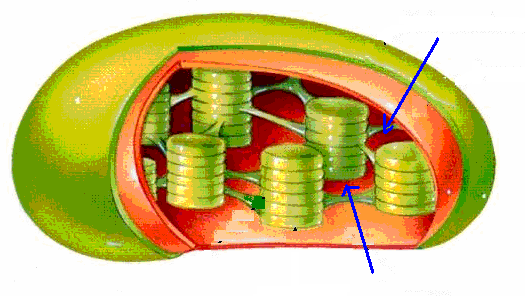
Image from: http://www.science.siu.edu/plant-biology |
10.
Name the TWO molecules that act as carriers for energy and high energy electrons
during photosynthesis.
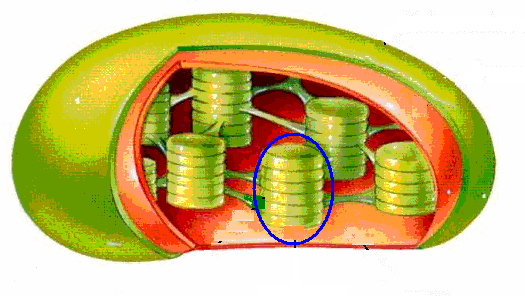
|
11. Name this stack of photosynthesizing membrane sacs. |
 |
12. Name A |
13. Name two of the three factors you learned about that affect the rate of photosynthesis.
|
14.
Name this molecule. |
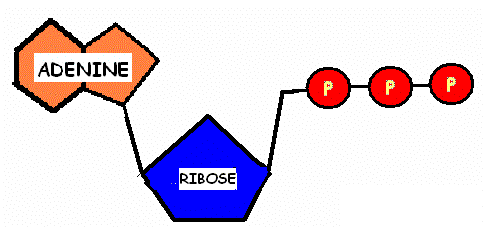 Image by Riedell |
15.
Organisms (like green plants) that can make their own food are called
______________.
16.
Name the scientist who won the Nobel prize for figuring out the pathway that
uses carbon dioxide to produce sugar.
 |
17. Name these B proteins that connect A and C. |
18.
Molecules (like chlorophyll and carotene) that absorb light energy are called
_____________.
19.
Where does the H come from in NADPH?
|
|
20. Name C |
21.
Name the phase of photosynthesis where ATP and NADPH are made.
22.
Where do the O atoms in water end up following the light reactions?
23.
What are the reactants in the Calvin cycle?
24.
Tell the first step in the light-dependent reaction of photosynthesis.
25.
The Calvin cycle can also be called the _______________ reactions.
26.
Write the equation for the formation of ATP.
27.
Which ion’s movement causes ATP synthase to spin and produce ATP?
28.
Where are the enzymes for the light-independent
reactions located?
29.
What is the main pigment used by green plants for photosynthesis?
30.
What is the chemical formula for glucose?
31.
Increasing
the intensity of light a plant receives should __________ the rate of
photosynthesis.
32.
Where do H+ build up
during the light-dependent reactions?
33.
How do electrons get from Photosystem II to Photosystem I?

http://www.nofretete-page.de/gemischtNeu/TN_plant_grow_w.JPG
|
34. Jan van Helmont carefully measured a plant's water intake and mass increase and concluded that the tree gained most of its mass from water. What was wrong with his conclusion? |
ANSWERS
1. blue-violet & red
2. thylakoids
3. Joseph Priestley
4. ATP Synthase
5. chlorophyll reflects green wavelengths to your eye
light
6.
6 CO2 + 6 H2O →
6 O2 + C6H12O6
7. in the thylakoid membrane
8. C6H12O6 (sugar)
9. Stroma
10. ADP carries energy as ATP and NADP+ carries high energy electrons
as NADPH
11. granum
12. Photosystem II
13. light intensity, amount of water, temperature
14. ATP (adenosine triphosphate)
15. autotrophs
16. Melvin Calvin
17. Electron Transport Chain (System)
18. pigments
19. comes from H2O when water splits
20. Photosystem I
21. light-dependent reactions
22. given off as oxygen gas to the atmosphere
23. CO2, ATP, NADPH
24. Light energy is absorbed by Photosystem II and splits a water molecule
25. light independent reaction
26. ADP + P
+
energy →
ATP
27. H+
28. in the stroma
29. chlorophyll
30. C6H12O6
31. Photosynthesis would increase until it reaches its maximum
32. in the thylakoid space
33. They travel down the Electron Transport Chain
34. Plants also use carbon dioxide from the air